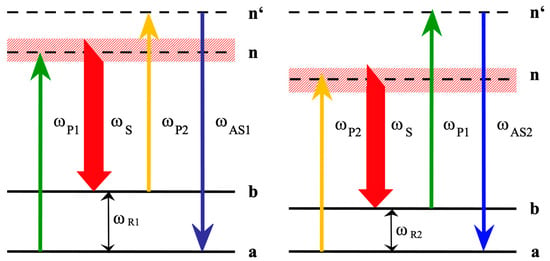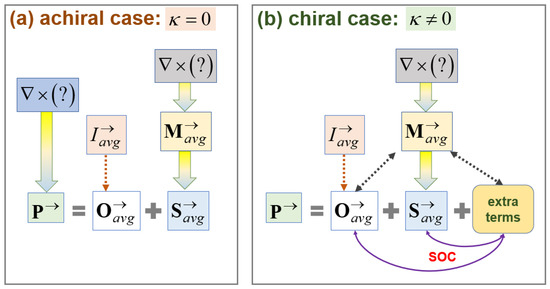Feature Paper Collection of Emerging Trends on Optics
A topical collection in Optics (ISSN 2673-3269).
Viewed by 3142
Share This Topical Collection
Editors
 Prof. Dr. Costantino De Angelis
Prof. Dr. Costantino De Angelis
 Prof. Dr. Costantino De Angelis
Prof. Dr. Costantino De Angelis
E-Mail
Website
Collection Editor
Department of Information Engineering, University of Brescia, Piazza del Mercato, 15, 25121 Brescia, BS, Italy
Interests: integrated optics; plasmonics; optical antennas; nonlinear optics; microwaves; energy harvesting; photonics; telecommunications
Special Issues, Collections and Topics in MDPI journals
 Prof. Dr. Thomas Seeger
Prof. Dr. Thomas Seeger
 Prof. Dr. Thomas Seeger
Prof. Dr. Thomas Seeger
E-Mail
Website
Collection Editor
Institut Fluid- und Thermodynamik, Lehrstuhl für Technische Thermodynamik, Universität Siegen, Paul-Bonatz-Straße 9-11, 57076 Siegen, Germany
Interests: development and application of new laser diagnostic techniques as measurement tools for reacting flows (Mie, Rayleigh, Raman, CARS)
Special Issues, Collections and Topics in MDPI journals
Topical Collection Information
Dear Colleagues,
Optical sensors and systems of sensors have found their way into all areas of science and applied research. It is quite obvious that everything we see or sense is subject to errors, e.g., in the form of systematic observation and measuring errors or in the form of stochastic observation noise. A sensed measurement is only an observation of “something” behind, which generates this observation, where the truth of this “something” is largely disguised—sometimes by technical limitations (such as bandwidth, noise, or signal to noise ratio) and sometimes even by limited powers of cognition, extracting, or interpreting the inherent information in sensed data. Nevertheless, the number of technically deployed optical sensors, as well as the potential of optical sensor systems, is growing continuously. Significant advances in optical metrology have been fueled by the development of new, innovative techniques, devices, and applications in a wide range of scientific fields. This featured paper collection will cover these advancements in the fields of optical sensing, sensor signal and information processing, as well as high-level information extraction/learning from optically sensed data in the following areas:
- Design of optical systems and sensors.
- Development of instrumentation.
- Optical metrology.
- Smart sensing by using optical sensors.
- 2D/3D high-speed imaging.
- Multiparameter measurements
Prof. Dr. Costantino De Angelis
Prof. Dr. Thomas Seeger
Collection Editors
Manuscript Submission Information
Manuscripts should be submitted online at www.mdpi.com by registering and logging in to this website. Once you are registered, click here to go to the submission form. Manuscripts can be submitted until the deadline. All submissions that pass pre-check are peer-reviewed. Accepted papers will be published continuously in the journal (as soon as accepted) and will be listed together on the collection website. Research articles, review articles as well as short communications are invited. For planned papers, a title and short abstract (about 100 words) can be sent to the Editorial Office for announcement on this website.
Submitted manuscripts should not have been published previously, nor be under consideration for publication elsewhere (except conference proceedings papers). All manuscripts are thoroughly refereed through a single-blind peer-review process. A guide for authors and other relevant information for submission of manuscripts is available on the Instructions for Authors page. Optics is an international peer-reviewed open access quarterly journal published by MDPI.
Please visit the Instructions for Authors page before submitting a manuscript.
The Article Processing Charge (APC) for publication in this open access journal is 1200 CHF (Swiss Francs).
Submitted papers should be well formatted and use good English. Authors may use MDPI's
English editing service prior to publication or during author revisions.
Keywords
- optical sensor systems
- optical sensors
- optical metrology
- smart sensing
- high-speed imaging
- information processing and extraction
Published Papers (2 papers)
2023
Open AccessFeature PaperArticle
Dual-Pump Vibrational Coherent Anti-Stokes Raman Scattering System Developed for Simultaneous Temperature and Relative Nitrogen–Water Vapor Concentration Measurements
by
Amon Too, Evaggelos Sidiropoulos, Yannik Holz, Nancy Wangechi Karuri and Thomas Seeger
Viewed by 1072
Abstract
Simultaneous gas phase temperature and water vapor concentration measurement are important to understand reacting flows such as combustion or gas reforming processes. Here, coherent anti-Stokes Raman scattering (CARS) offers the possibility for non-intrusive measurements with a high temporal and spatial resolution. Therefore, this
[...] Read more.
Simultaneous gas phase temperature and water vapor concentration measurement are important to understand reacting flows such as combustion or gas reforming processes. Here, coherent anti-Stokes Raman scattering (CARS) offers the possibility for non-intrusive measurements with a high temporal and spatial resolution. Therefore, this work demonstrates the simultaneous measurement of temperature and relative water vapor–nitrogen concentrations by using dual-pump vibrational coherent anti-Stokes Raman scattering (DPVCARS). A calibration procedure is developed for a temperature range of 473 K to 673 K and a water vapor concentration of 24% to 46% at ambient pressure. This setup is tested with 500 CARS single pulse spectra taken in a gas cell at a known temperature and concentration. Based on these results, information about precision and accuracy can be delivered.
Full article
►▼
Show Figures
Open AccessArticle
Spin–Orbital Coupling and Conservation Laws in Electromagnetic Waves Propagating through Chiral Media
by
Hyoung-In Lee
Cited by 1 | Viewed by 1405
Abstract
This study examines the characteristics of the electromagnetic waves that propagate through an unbounded space filled with a homogeneous isotropic chiral medium. The resulting characters are compared to those of the electromagnetic waves propagating through an achiral free space. To this goal, we
[...] Read more.
This study examines the characteristics of the electromagnetic waves that propagate through an unbounded space filled with a homogeneous isotropic chiral medium. The resulting characters are compared to those of the electromagnetic waves propagating through an achiral free space. To this goal, we form energy conservation laws for key bilinear parameters in a chiral case. Due to a nonzero medium chirality, conservation laws turn out to contain extra terms that are linked to the spin–orbit coupling, which is absent for an achiral case. In this way, we identified where the neat hierarchy exhibited by the achiral case among the key bilinear parameters is destroyed by a medium chirality. As an example, we took a plane wave for the chiral case to evaluate those bilinear parameters. Resultantly, the conservation laws for a chiral case are found to reveal inconsistencies among several bilinear parameters that constitute the conservation laws, thereby prompting us to establish partial remedies for formulating proper wave-propagation problems. Therefore, adequate applications of boundary conditions are found to be necessary after examining typical problems available from the literature.
Full article
►▼
Show Figures








